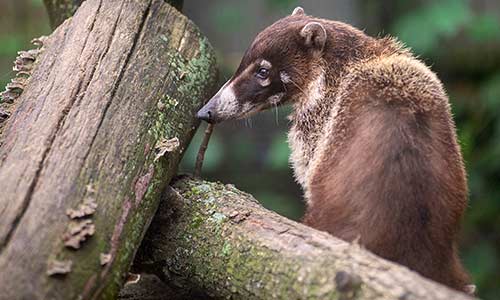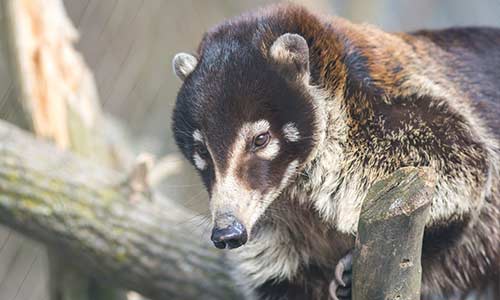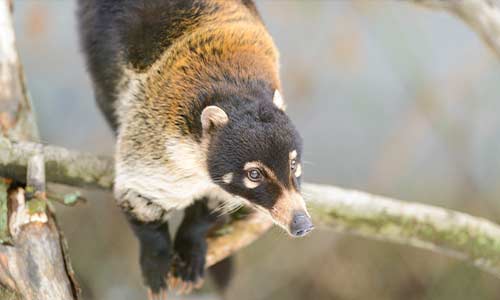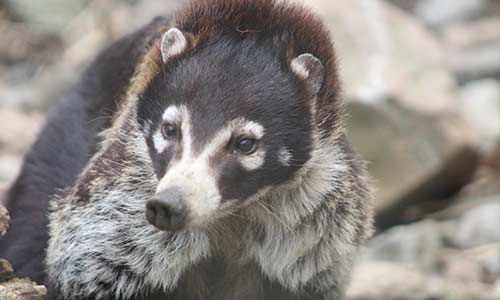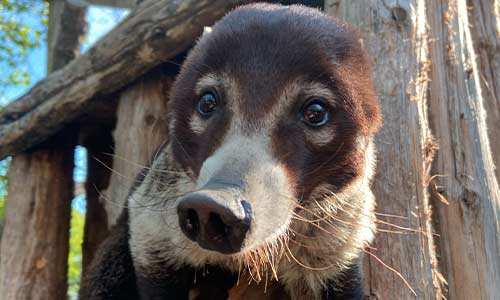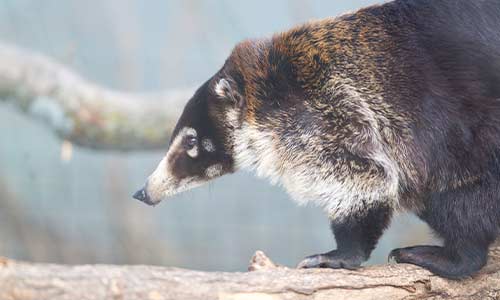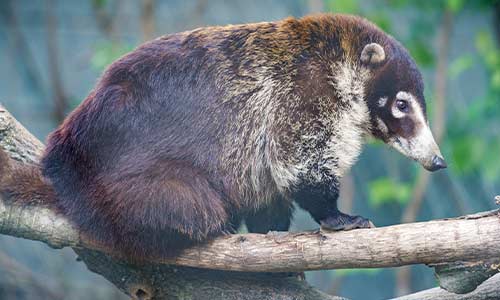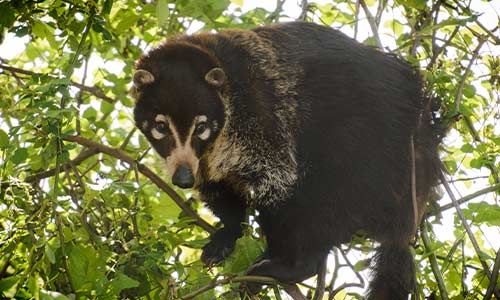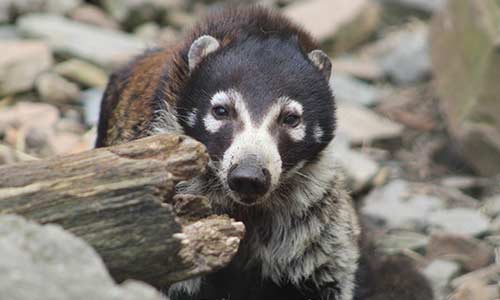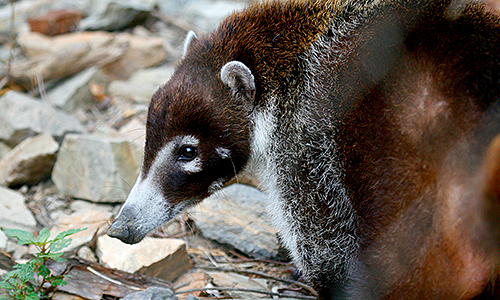Coati
Nasua narica
About the Coati

Geographic Range:
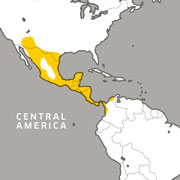
Class: Mammalia
Order: Carnivora
Family: Procyonidae
Genus: Nasua
Species: narica
A relative of the northern raccoon, the coati is typically pale brown with dark brown markings. A mask surrounds its white face, brown snout and black nose. Its distinctive black and white striped tail is generally carried erect. Associating in loose bands of four to 20, the coati uses snorts, grunts, chatters and screams to communicate. Grooming also helps maintain social bonds.
Coati Facts
Appearance:
Coatis are related to the northern raccoon, and they have the classic mask around their white face. They’re generally pale brown and have dark brown markings, which provide camouflage. They have brown snouts and black noses. Coatis’ distinctive black and white striped tail is generally carried erect, and they use it to signal to one another and keep their bands (groups) together. They have long claws, which help them to climb trees and dig food from burrows or rotted logs.
Size:
Coatis reach lengths of 13 to 27 inches, with a tail of 20 to 25 inches. They weigh between 7 and 15 pounds, with a maximum weight of 20 pounds.
Diet:
Omnivorous coatis use their long, flexible nose to root out small prey from the ground. Bands of coatis have been known to stay at the same tree until it’s stripped of fruit.
Reproduction:
Coatis reach sexual maturity at 2 years of age, and they breed in late winter. Gestation lasts 77 days, and females leave the band (group) to deliver two to six pups in a hollow tree or nest. After about 11 days, pups’ eyes open, and they leave the nest after four weeks. Mothers rejoin their band between five and six weeks. Pups are weaned at 4 months, but they stay with their mother until she becomes pregnant again.
Behavior:
Coatis stay in loose bands of between four and 20 animals. They help maintain bonds through grooming and a variety of calls, which include chatters, screams, snorts and grunts. They sleep in nests or tree forks at night, and spend most of the day hunting on the ground.
Role in Their Habitat:
Large birds (eagles and hawks), cats (cougars and jaguars), monkeys and snakes all prey on coatis. Some studies suggest that coatis are primary pollinators of certain plant species.
Habitat/Range:
Coatis live in a variety of habitats including wooded and desert canyons, rocky terrain, mountains and tropical forests. Their range is from the southwestern United States through Central and South America.
Median Life Expectancy:
In the Wild: 7 - 15 years
In Captivity: 22 years
You Can Find This Animal in the Treasures of the Sierra Madre
Playing in the Band
Adult males are mostly solitary, while adult females and young coatis live in groups called bands.
You might also like
At Franklin Park Zoo:
At Stone Zoo:

